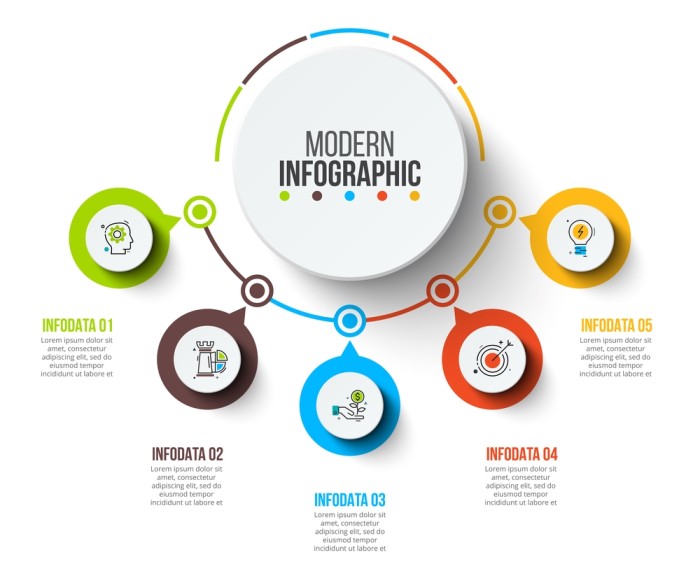
We live in a world where data becomes a valuable asset. Quite a bit of that data might be potentially helpful, but understanding it very well may be a test. Organizations that can furnish their audience with insightful facts in a straightforward arrangement have a distinct advantage. Probably the best approach to accomplish this objective is by producing infographics.
Infographics are graphical representations of complex data. They give a fun method to study a specific topic without doing a great deal of perusing. Infographics are likewise exceptionally shareable, which makes them ideal for a viral marketing effort.
- Utilize the best data to represent infographics
While making an infographic, numerous individuals center exclusively around the structure components. But if the data utilized isn’t exciting or supportive, then it won’t make any difference how great the infographic looks. A compelling infographic should be established on data that is interesting. Probably the most straightforward approach to discover data sources for your infographics is to take a gander at sites in your industry. Search for posts that have pulled in a ton of tweets, +1’s, and preferences. This social sharing demonstrates the popularity of the content and will improve the probability that your very own infographic will be shared.
- Make A Story
Infographics are a sort of storytelling. Each segment of the infographics needs to spill out of one area to the next in a reasonable request. Plan a framework that shows how this story will develop.
- Use Illustrations Instead Of Graphs And Charts
When structuring your infographic support illustrations over graphs and charts. An ongoing report delivered by Quick Sprout indicated that infographics with pictures get 72.8% more Facebook likes than those fair with graphs and charts. Likewise, as per the infographic network Visual.ly, 53% of the most shared infographics don’t contain any data visualization. Before you utilize any picture, guarantee that it is royalty-free. A generally distributed infographic that provides images you don’t have the copyright to can get you in a tough situation.
- Pick The Right Size
Marketing specialists propose that the perfect flat width for an infographic is 735 pixels. This makes an infographic that will stick out but not one that is wide to such an extent that it should be resized. It is additionally a smart thought to keep the infographic under 5000 pixels high. If you go longer than this, you hazard losing the peruser’s consideration.
- Keep It Simple
To make your infographics increasingly intelligible, you have to keep the plan components reliable and generally straightforward. Stick to one style for the entirety of the pictures, photos, and designs utilized in the infographic. For instance, if you are using a space theme, at that point, that theme should be used throughout the whole infographic. You should likewise utilize limit the style and number of fonts that you use.
- Utilize A Single Focal Point
Lucidity is vital for a compelling infographic. One approach to accomplish this is to utilize a solitary focal point that unmistakably shows the message of the infographic. Expanding from this infographic can be other relevant data that clarifies the story you are attempting to tell.
- Make It Shareable
Probably the most significant advantage of utilizing infographics is that they can be shared. You need to make sharing your infographic as simple as would be prudent. Add social sharing buttons to your infographic for the significant social networks, including Pinterest, Facebook, Twitter, Reddit, and LinkedIn. You may likewise need to incorporate a call to action at the bottom of the infographic, which reminds the peruser to impart it to their companions, family, and colleagues.
Infographics are ideal for breaking through the visual clutter of the web. A useful infographic can rapidly catch the eye of your audience. Infographics dependent on insightful data that recount to an exciting story are profoundly shareable, which make them the ideal content vehicle for the social web. Figure out how to make an infographic, and investigate our infographic templates.
Advantages of Infographics for Public Relations
Infographics can exhibit data in a convincing, exciting way that is more effectively understood than other kinds of content. Perusers can without much of a stretch to understand your key message. “If you need to advance a few facts about a brand, a vivid infographic is probably the best approach to spread this message,” says Tom Chapman at PR Examples.
Infographics additionally stick out and gain consideration. With a vast number of articles posted online consistently, that is a valuable advantage.
Infographics are share-capable. They can circulate the web and be shared around the world, as their message can without much of a stretch be spread to other countries.
Infographics increment brand mindfulness. An infographic with the organization’s logo encourages clients to connect it with a product, which expands mindfulness rapidly.
Infographics support earned media situations. Most news sources love infographics. PR groups that develop interactive infographics can increase their advantage and improve the probability that writers will react to their pitches and publish their submitted content.
Author Bio:
Sunny Chawla is a Hiring Director at Alliance International – An IT Recruitment Agency. He specializes in helping with international recruiting, staffing, HR services, and Careers advice service for overseas and international businesses.
